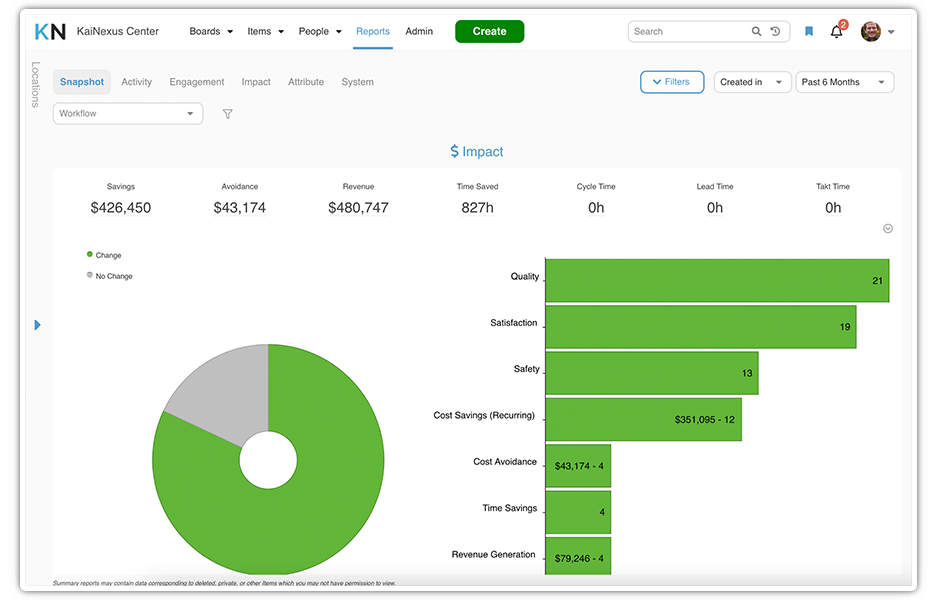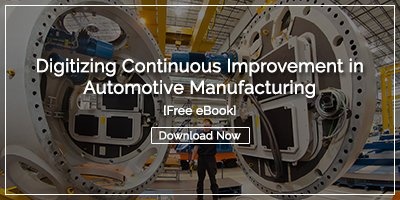No matter what industry your organization is in, competition these days is tough. Regardless of your customers, every organization needs to improve and evolve constantly. The Lean manufacturing approach is proven to achieve operational excellence and beat the competition.
Although it started in the manufacturing sector, today, Lean is a business improvement technique used in every industry by organizations of all sizes. It focuses on the customer's defined needs by eliminating waste often built into daily operations. Waste refers to non-value-adding activities such as transportation, motion, waiting, inventory, overproduction, over-processing, and defects that are not meaningful to the customer.
What is Lean Manufacturing?
Lean Manufacturing also called Lean production, evolved from the Toyota Production System. Toyota achieved worldwide recognition for quality and efficiency after implementing manufacturing process management changes focused on respect for people and continuous improvement. Researchers studied Toyota's success and uncovered the five Lean manufacturing principles:
- Identify value from the eyes of the customer
- Specify and map value streams
- Create an uninterrupted flow of value to the customer
- Establish a pull system
- Seek perfection
Once the value is established by the customer, the value stream flows based on the customer's needs by reducing waste. As an organization eliminates waste and establishes seamless flow, many benefits follow. Several Lean techniques support the approach, including kanban boards, the PDSA improvement cycle, daily huddles, and 5S workplace organization.
The Most Significant Benefits of Lean Manufacturing
Implementing Lean is an excellent way to help any organization reach its goals. Of course, the benefits will vary based on the current state and the type of business. Still, there are some tangible benefits that almost every organization that successfully deploys the lean approach can expect.
Increased Employee Engagement
The Lean method relies on employees to suggest ideas for improvement and implement them. Part of respecting people is placing great value on employees' insights, whether they work in the C-suite or on the front line. When employees are given ownership of the processes they operate, they become more willing to engage emotionally with their work and expend discretionary effort. Engaged employees are more likely to stay with the organization, help others succeed, and participate in professional development. One of the wastes that Lean aims to reduce is human potential.
Improved Customer Satisfaction
The first principle of Lean is establishing value from the eyes of the customer. Lean leaders don't guess about what the customer needs or wants. Instead, they conduct research that can take the form of surveys, focus groups, or direct observation. Organizations that understand how customers perceive their products and services are in the position to make changes that align with customer preferences. In addition, Lean organizations don't price their products based on cost. Instead, they work backward from what the customer is willing to pay and find ways to produce the product within that framework at the highest possible profit. This is possible by eliminating targeted wastes such as over-processing and defects.
Enhanced Leadership Skills
The Lean manufacturing approach introduces a more thoughtful and proactive approach to daily management. As a result, leaders get better at identifying and reducing non-value-adding activities. Each manager starts to define how their operational area could implement improvements to improve quality, become more efficient, and maximize profitability. Clear objectives add clarity to every leadership role and help people grow their skills in creating a more effective and unified team.
Lean also introduces the idea of Leader Standard Work. Generally, Standard Work is the current best practice for performing any task or process. Leader standard work is the same concept. It is the best practice for leaders to implement, sustain and spread improvement. It includes the set of behaviors, activities, and tools that are a part of the daily work of leaders. The goal of Leader Standard Work is to reduce variation, enhance performance, demonstrate how to make practical improvements, develop team members, and support people.
Structured Improvement
Lean is a structured and scientific approach to continuous improvement. Changes aren't made on the fly or based on a hunch. Instead, an improvement cycle is used to define the problem, explore possible solutions, implement changes, and (crucially) measure the results. The most commonly used improvement cycle is PDSA.
Plan: During the first step of the cycle, stakeholders define the issue to be addressed, take baseline measurements for comparison, discuss potential remedies, and assign ownership. The goals for the project are defined, and the team decides how success will be measured.
Do: Next, a potential solution is implemented. The goal is to make incremental changes frequently, so the change should be discrete enough to measure.
Study: Once the change is implemented, the team uses the predefined measurements to determine if the process has been improved enough to make the change permanent.
Adjust: If the experiment was successful, the Standard Work is updated to reflect the new state. If not, the cycle begins again with a new hypothesis about what will resolve the problem.
The benefit of this structured approach is that everyone knows what to do when change is needed. Results become more predictable, and everyone talks about problem-solving with the same vocabulary, making it much more comfortable and routine.
Organizational Alignment
Lean leaders guide their organization toward its ultimate purpose or "True North." Through a process of strategy deployment, sometimes called Hoshin Kanri, the leadership team establishes the long-term breakthrough goals of the organization. These are broken down into annual objectives, which cascade down the organization to individual goals and performance measures.
When everyone understands the overall mission and their role in achieving it, decision-making is simplified, and it is easy to set priorities. With Lean, you have the added advantage of the drive to create customer value, which informs every decision and sets the stage for harmonious operations.
Impact Measurement
Because Lean is a scientific approach to management, organizations can objectively measure the value of improvement efforts. Every project begins with measurements of the current state, and change is only implemented once a measurable impact is proven. Therefore, Lean manufacturing organizations can calculate the results of their improvements based on measures like customer satisfaction, cost, time to market, safety incidents, revenue, and quality.
In addition, Lean organizations can deploy software to track and manage all of their improvement activities. By dining so, they can also measure employee engagement, activity, and direct impact.

Ever Growing Tribal Knowledge
In a Lean organization, every improvement builds on the last, and ideas are spread without concern for functional silos. Capturing this knowledge is another reason that continuous improvement software is so valuable to Lean organizations. The lessons learned from each project can easily be shared with others to make future improvements more effective and efficient. Often a specialized report called an A3 is used to encapsulate the essential aspects of each effort and make it easy to share.
Increased Profitability
When implemented effectively, Lean reduces waste and increases customer value resulting in higher organizational profits. Although it is often misconstrued, Lean is not centered strictly on cost-cutting. Instead, it focuses on providing value to the customer without unnecessary activities or resources and without blocking the flow of value. Profitability is the natural result when the value stream is seamless and waste-free.
Clearly, there are many reasons to consider embracing the Lean manufacturing management paradigm. However, it is crucial to remember that Lean works best when it is a central feature of the organization's culture. It takes effort and strong leadership, but the benefits are compelling.





Add a Comment